This weekend, I had the pleasure of visiting Boston for the first time ever! After 46 years of sharing a name with the East Coast’s iconic Bean Town, Boston finally went to Boston.
The reason? Mythology--naturally!
A few months ago, I read this article in the New York Times. Six paintings by the 16th Century master painter Titian based on Roman mythology had been reunited after 500 years. Something about that spoke to my soul, like a planetary alignment that only happens once every thousand years. Or, in this case, maybe all eternity. The astronomical expense and complex logistics that made this possible are unlikely to be repeated.
I had to go. And it did not disappoint.
First of all, the paintings are huge, measuring approximately 6’ high by 7’ wide. Secondly, Titian doesn’t draw delineations between his elements. One color blends into another.
If you stand very close and look at the outline of Venus’s body, you may discover that she is part of the whole, separated only by gradations of color.
If you step back slowly, maintaining focus on that central point, the painting takes on unimaginable depth and dimension -- like a Magic Eye book, where some bodies pop three-dimensionally off the canvas. It reminded me of the storybook scene at the beginning of the Wonder Woman movie, when Hippolyte tells young Diana the history of the Amazons.
Titian's paintings depict scenes from Greek and Roman mythology. Each painted poem tells an entire myth in a still image. Truly magnificent.
These stories are violent and horrific, and the gender politics are impossible to overlook. The women are naked. The men clothed. Andromeda is chained. Jupiter impregnates Danae, disguised as golden rain. And Europa is abducted by a bull (Jupiter again.) Only the goddess Diana holds the power to enforce her boundaries. Mortals all suffer from the passions of the gods.
These myths will make excellent subjects for new podcast episodes.
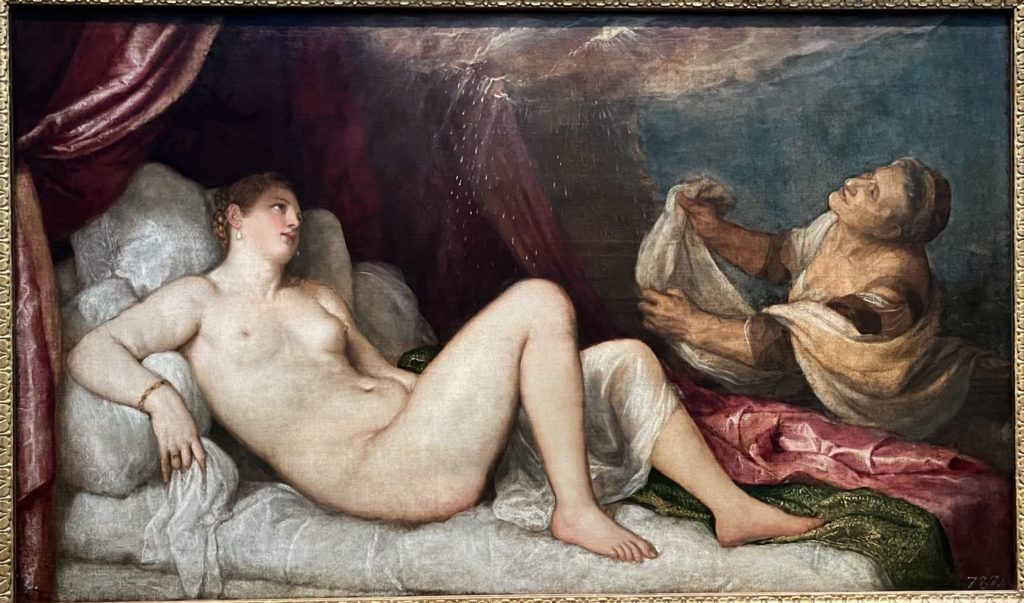
Danae (1553)
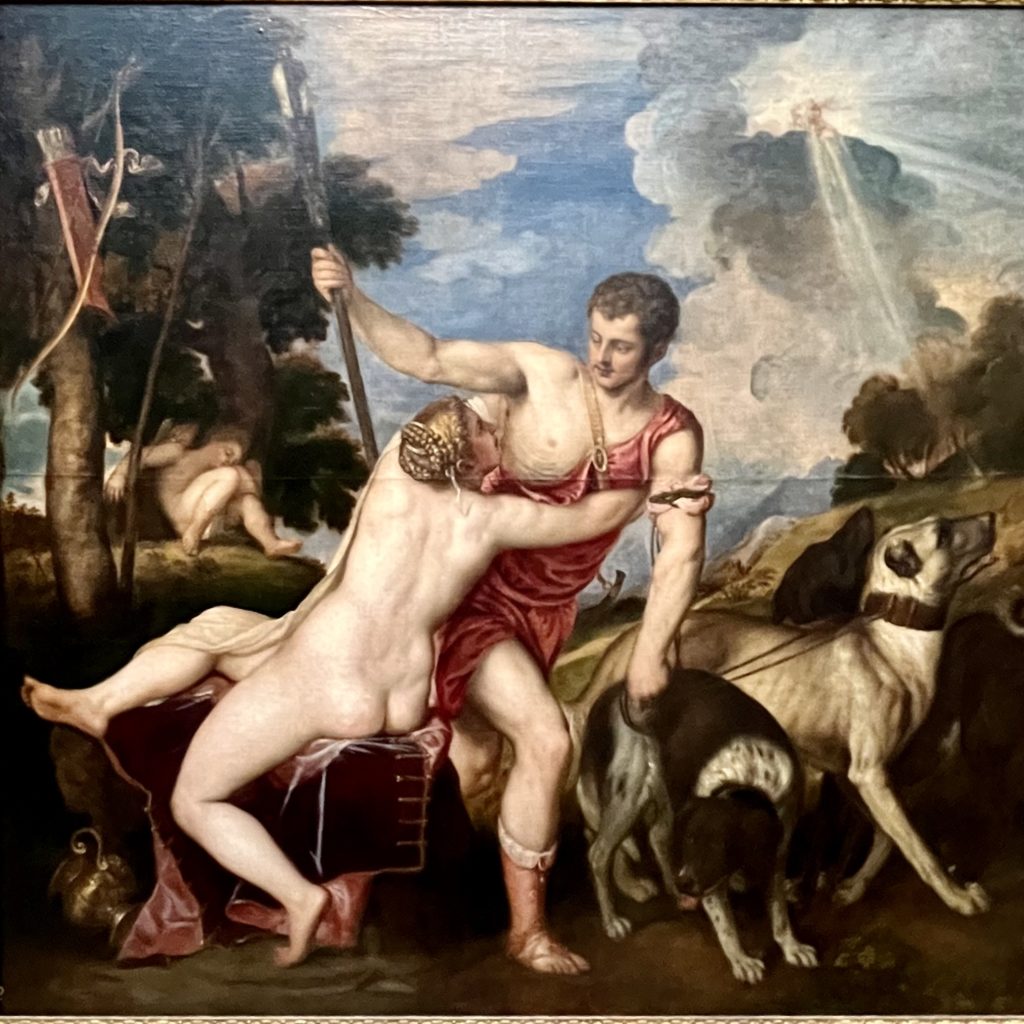
Venus and Adonis (1554)
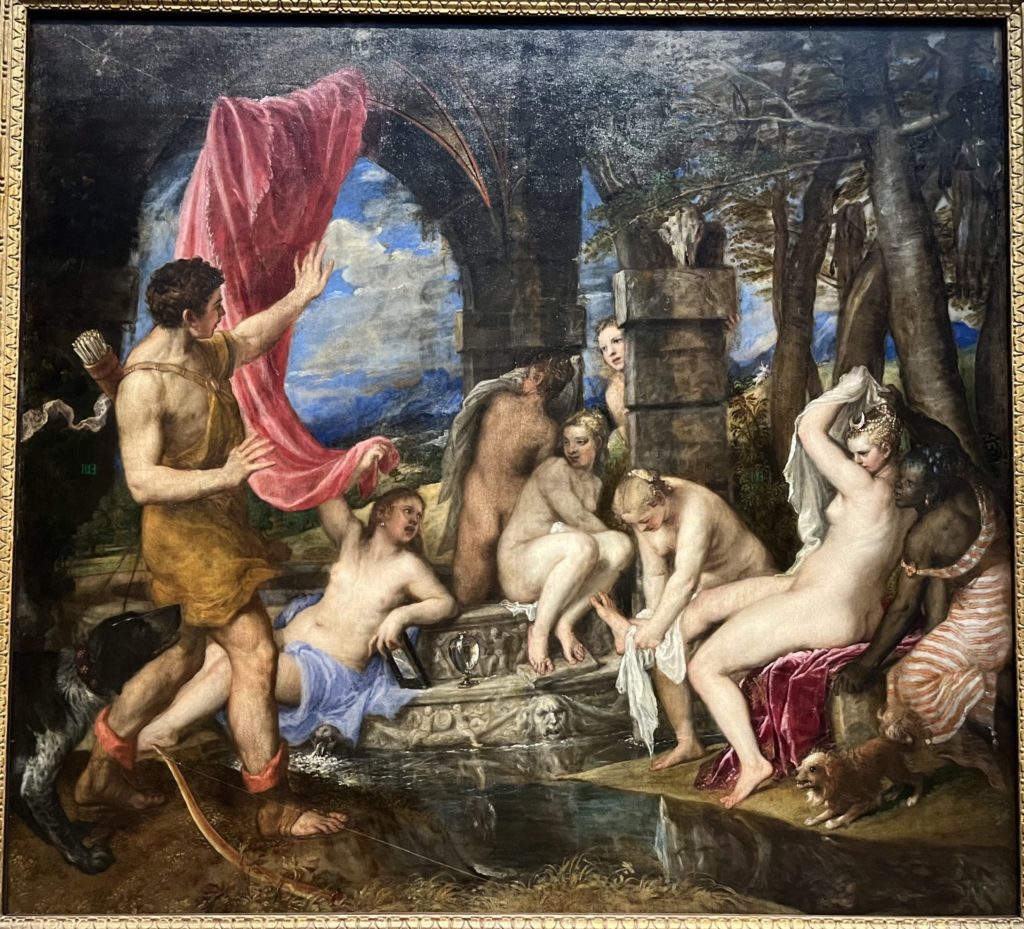
Diana and Actaeon
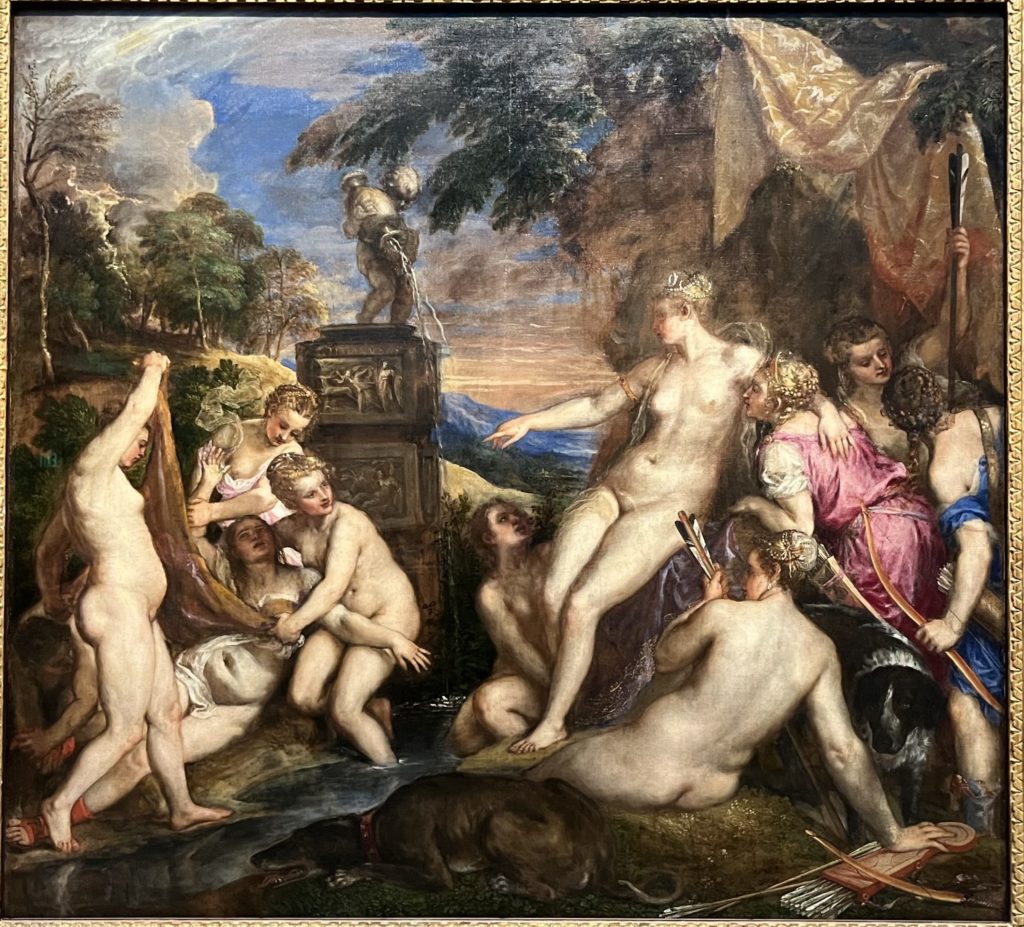
Diana and Callisto
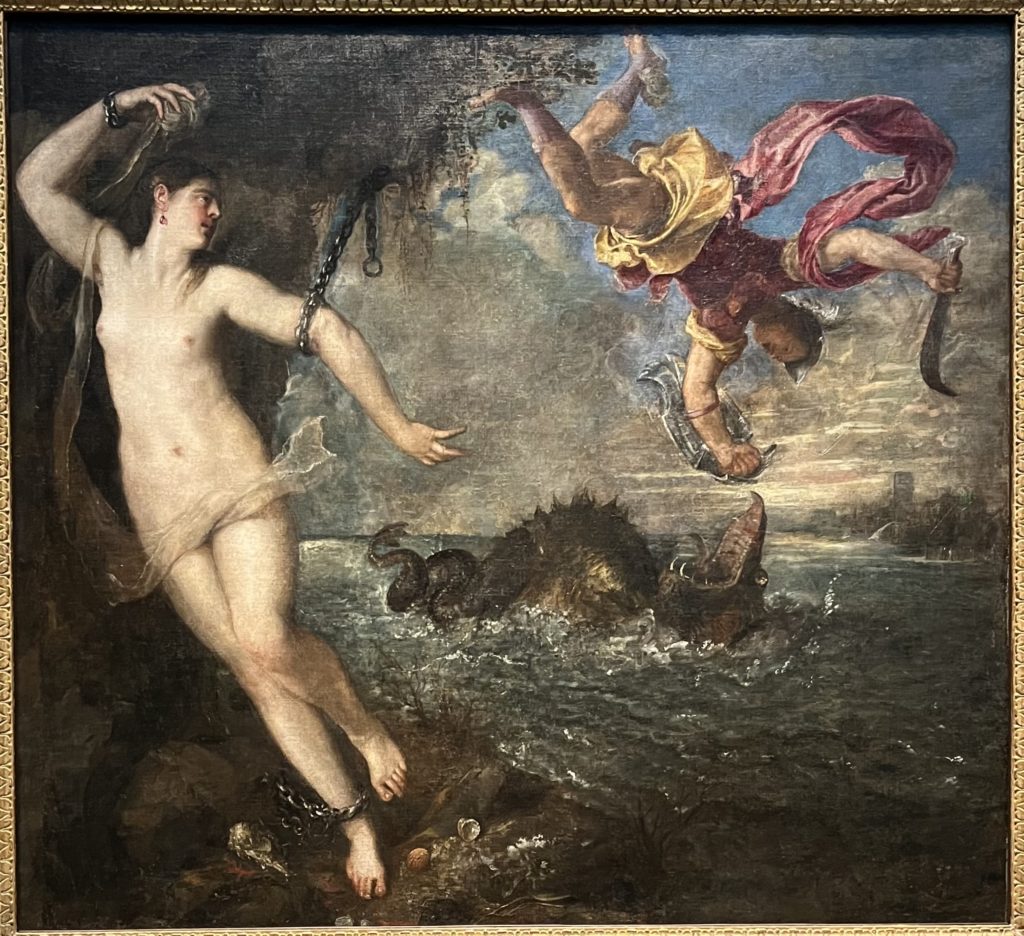
Perseus and Andromeda
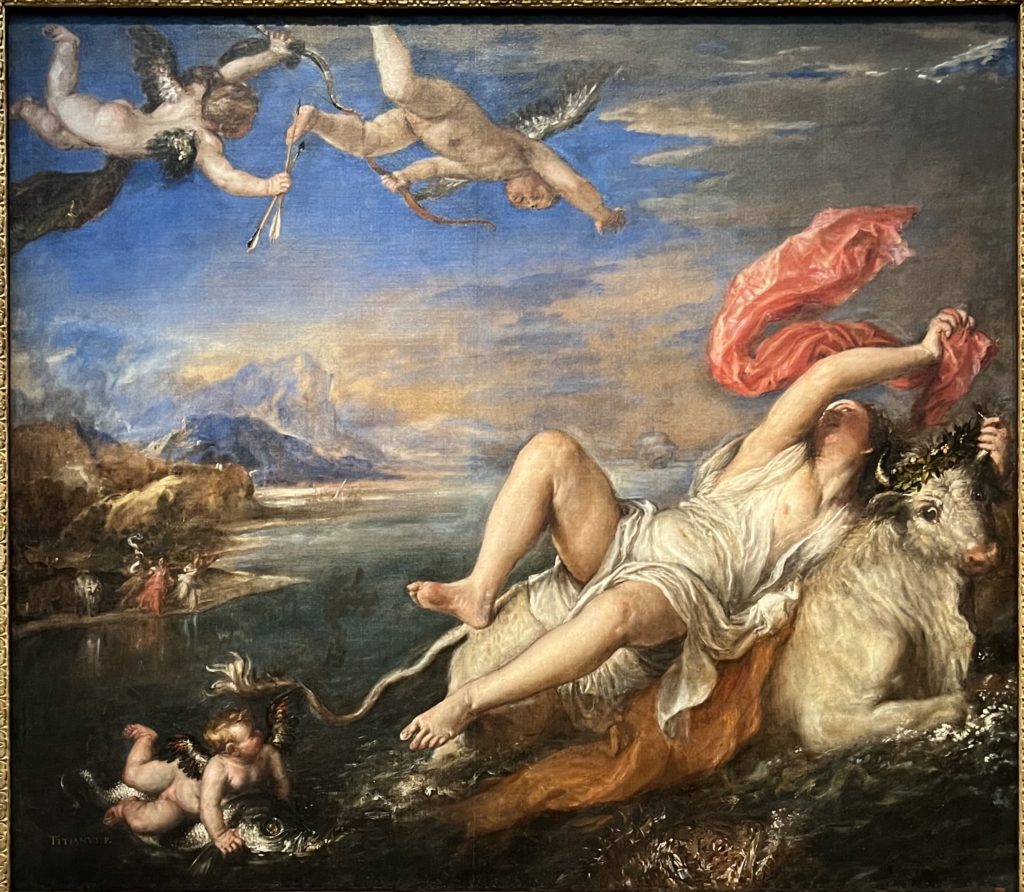
The Rape of Europa
